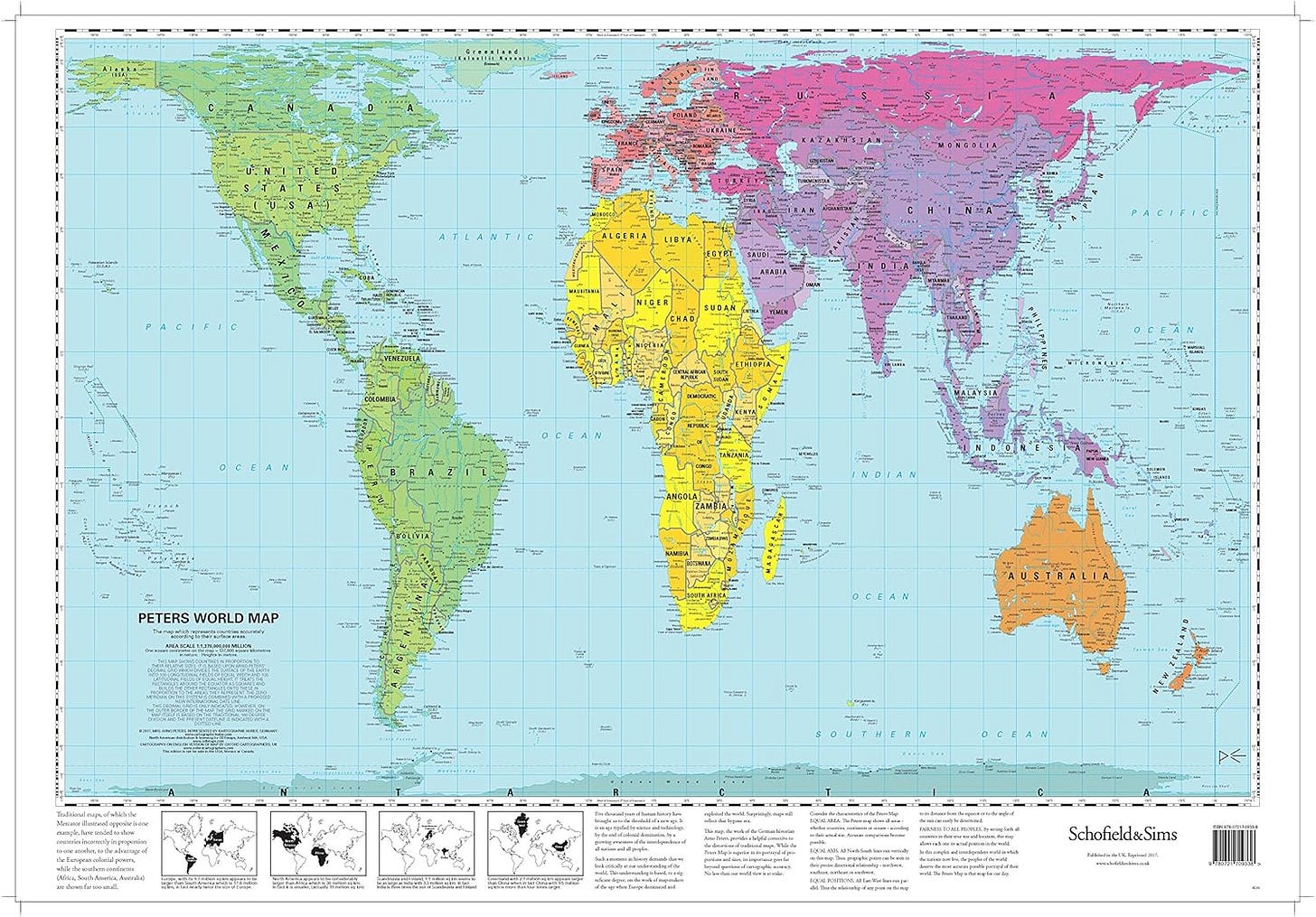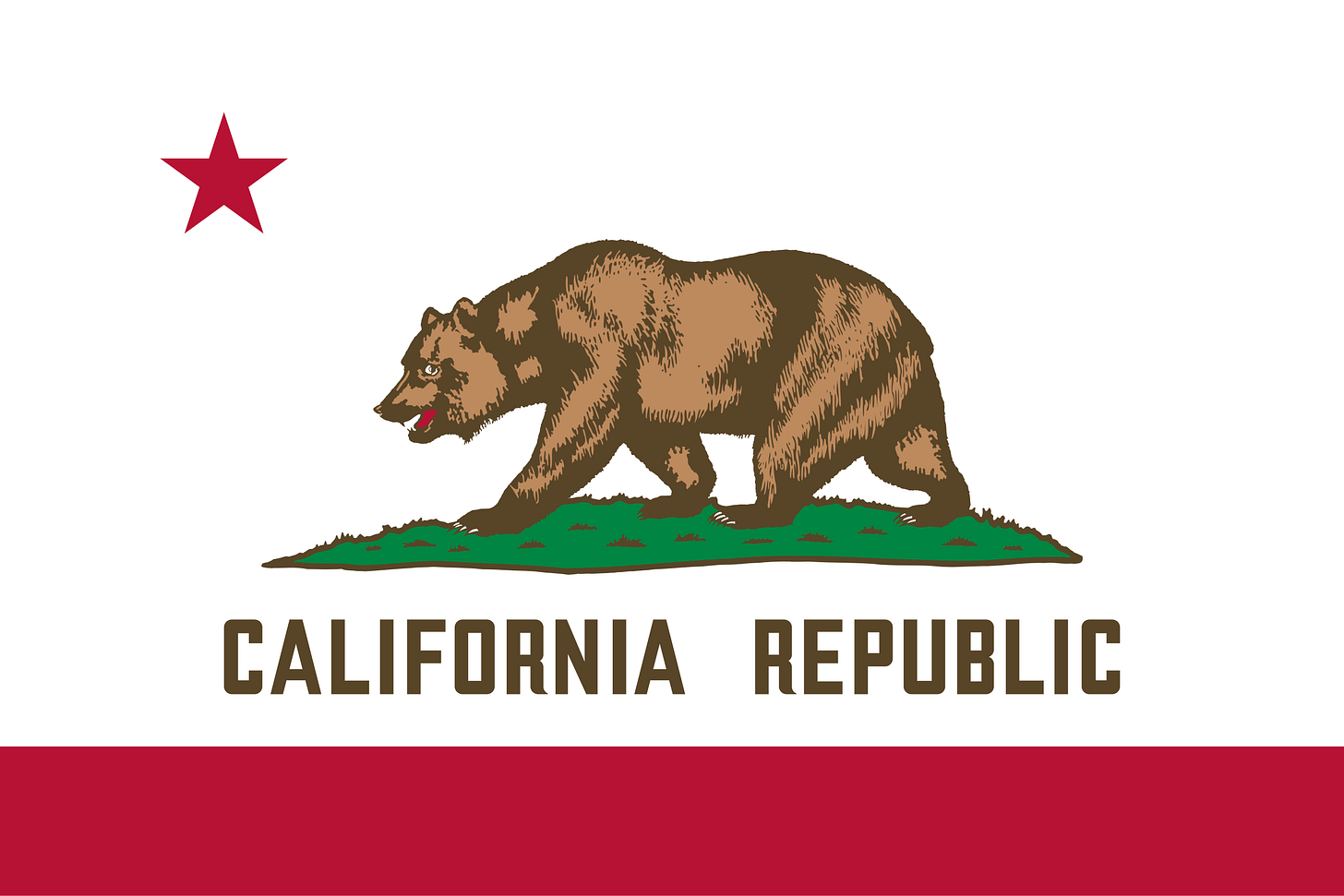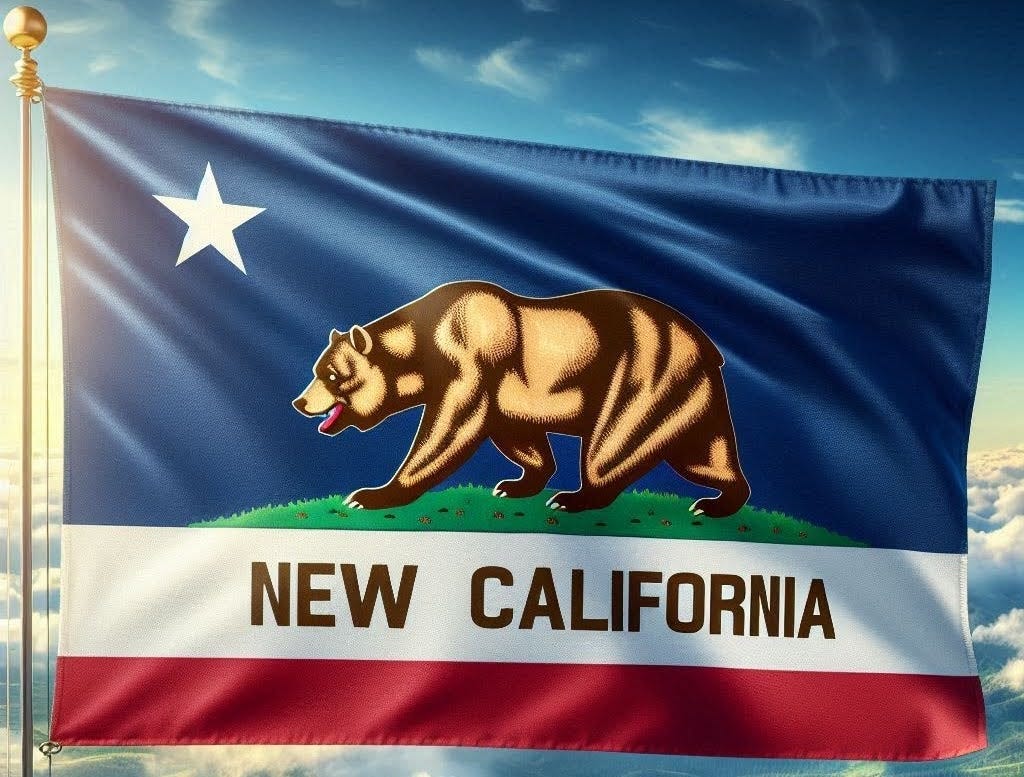Territory – how to solve it
Five solutions to bridge the divide...
“Politics is not the art of the possible. It consists in choosing between the disastrous and the unpalatable.” - J. K. Galbraith, in a letter to President John F. Kennedy, 1962
There is no “conventional” answer to the Ukraine territory question. Despite President Trump’s courage in securing promises from Presidents Putin and Zelensky to meet with one another, taking fire from the world’s media in so doing, an immense gap between the two surely remains on territory. There are rogue militias in Ukraine perhaps willing to threaten Zelensky’s life if he concedes too much. And Putin, having sent hundreds of thousands of his young men into the mud, has his own risks if seen now to be weak.
If the war’s to be stopped, it’s going to require something imaginative – well within President Trump’s abilities. Also fast – his demand.
President Trump is keen, always, to receive a full spectrum of options and possibilities. The below delivers it.
To have a serious conversation about solutions, we must first accept the military reality: Ukraine is out-gunned, steadily losing territory, and all math is against it – heroic though Ukraine’s defense has been.
Seeing this reality, here are five options – making unpalatable from what would, without President Trump, be disastrous.
Option A: Deadline on US Article 5 security guarantee offer
Accept Russia’s terms for territory – or thereabouts
The offer of a US security guarantee to expire in one week if Ukraine does not accept
Ukraine cedes territory
But receives a robust US (and Europe) Article 5 Mutual Defense Treaty, ratified by the US Senate, for the ~80% of what remains – that Ukrainians have fought valiantly to preserve
I can imagine the President’s “Truth” already:
“Ukraine has a choice: either the VAST MAJORITY of Ukraine can FLOURISH and PROSPER under a US and Europe Article 5 security guarantee – or Ukraine can be left to fend off the Russian Bear by itself. Which does Volodymyr want? It’s time to MAKE A DEAL. ⏰”
My verdict: Of all options, I think right now this is the most likely. But it’s not the most creative.
It would be deeply unpopular throughout Europe and in the UK, though it would stop the war – in an enduring way.
Given where we are, I don’t hate the option. And the offer of a US Article 5 guarantee is historic. If the US team were to go for this, to “stop the killing”, they have my support.
Option B: A “Louisiana Purchase” of the occupied territory
Professor Stephen Kotkin in conversation with The New Yorker’s David Remnick, October 3, 2023 (at timecode 16:20):
“Russia doesn’t get to annex it [the territory]. They have to pay for it. You make it on an installment plan. A five-, or ten-, or twenty-five-year plan. At the end of it, after Russia pays the money – and if they behave in a way that doesn’t threaten Ukrainian sovereignty during that period – we would internationally recognize it as Russian territory. It’s a lot less satisfactory than taking it back, and reinstating it as Ukrainian territory. I get that. But, if you can’t get it back, if you can’t impose the peace that’s morally just, if your partners won’t put boots on the ground to impose that peace on Russia with you, and you can’t pay the costs that might be necessary to take it back on the battlefield – if those things are true, then what do you do? It’s not something that I’m happy about. But I’m aiming for a Ukraine that’s rebuilding, not being bombed and destroyed. If I don’t get it all, I’m not going to acknowledge Russian occupation legally, unless there’s a bargain and behavior modification on the Russian side.”
A version of this (unwittingly) might well play out – holding onto Russia’s frozen ~$300bn. Could it be formalized?
The US purchased Louisiana from Napoleon in 1803 for $15 million. (~$429M today inflation adjusted)
The US purchased Alaska from Russia in 1867 for $7.2 million. (~$157M today inflation adjusted)
Professor Kotkin was the first academic both to use the analogy of the Korean Armistice for Ukraine, and to argue for a US & allies Article 5 security guarantee for Ukraine (his 2023 interviews led me to both suggestions). Sir Niall Ferguson: “Professor Kotkin is always right. That’s rule number one.”
My verdict: Cries of a new “auction-based order” would be cutting. With Taiwan in mind, I think territory for cash would have a more destabilizing effect globally than Option A, and simply writing off 20% of Ukraine. Just my view.
Option C: Nine carrots for Putin to move back
There are a lot of things the US could offer Russia – some in mutual interest.
The media at large routinely says, “Trump has no leverage on Russia”. But this is roundly false. A list of carrots:
1. A long-term solution for shared water management in Crimea, including joint reconstruction of the Kakhovka Dam.
2. The US and allies to lift sanctions dating back to 2014, and to normalize relations with Russia. (Not including Nord Stream 2. That’s to remain closed.) But including Russia’s Arctic LNG 2 project, and the option for Russia to return to SWIFT.
3. The US and Russia to rejoin an updated version of the Open Skies Treaty. The Baltic countries especially want Russia – requiring the US – to rejoin, to have aerial visibility of troop build-ups. President Trump and Secretary Pompeo left the door open in 2020: “There’s a chance we may make a new agreement or do something to put that agreement back together.” Russia welcomes a revival of the agreement. It’s in Europe’s security interest the US does.
4. The US to assist Russia with its satellite early-warning system, so it can see submarine missile launches from the North Sea – reducing the likelihood of a false alert. Nobody in traditional media talks about this, but an MIT professor emeritus, Ted Postol, is convinced that Russia cannot “see” submarine missile launches from space – and that (because of retaliate-on-warning protocols), we’re all endangered to accident because of it.
5. Revive the Intermediate-Range Nuclear Forces (INF) Treaty – the US and Russia together aiming to bring Beijing in as a signatory. President Trump, October 20, 2018: “Let’s really get smart and let’s none of us develop those weapons.”
6. Refresh the New Strategic Arms Reduction Treaty (New START), which is set to expire February 5, 2026 – the US and Russia working together to include China and hypersonic missiles.
7. Lift sanctions on Belarus, including restrictions on potash. Cunning: get Putin’s closest ally on side.
8. A detailed discussion of wider security concerns in Europe: no further US long-range missiles to be delivered to Germany; in exchange Russia to remove nuclear weapons from Belarus…
9. Russia to rejoin the G8 – which President Trump has welcomed.
My verdict: All the above constitutes meaningful leverage. Many items need to be discussed much more by traditional press. But I – and others more knowledgeable than me – do not think any such list of carrots would be compelling enough to get President Putin to move back.
This list can – and should – be used for something. But it’s unlikely to get Russia to reverse on territory.
Option D: A new autonomous region
- Question: What’s the 47th state?
Answer: New Mexico.
- Q: What does a map of the occupied territory in Ukraine look like?
A: If you discount Crimea, does it not look a lot like an inverted California?
- Like 1850s California, the occupied territory has the potential to be re-founded with prosperity from mining.
- And, with fresh eyes – a bear and a star – does the California flag not look kinda Soviet?
If President Trump were to start saying that he wishes to turn the occupied territory into “New California” – “We want PROSPERITY, not war” – how would it be received, with each side, and in the media?
To us Europeans, “California” (despite Democrats’ best attempts to ruin the state) is still an emblem of a better future.
Re-christen the occupied territory, as a new region…
The US and Russia share red, white and blue – and these are (almost) the colors already used for the Donetsk/Luhansk People’s Republic flags: https://en.wikipedia.org/wiki/Flags_used_in_Russian-occupied_Ukraine
- Ask Russia if it would be willing to make the area an autonomous region.
- Residents in the territory encouraged either to assimilate or emigrate, being ensured a passport and citizenship in the place they choose to settle: Ukraine, Russia, or “New California”. Separate voting rights for each.
The sheer wackiness of the name might break the logjam and get Ukraine and Europe to go along. (Short story of Ambassador Ric Grenell using Trumpian naming to finalize a 2020 Kosovo-Serbia normalization agreement here.)
The territory becoming an autonomous region would be much more face-saving for Zelensky.
Sell publicly as “re-doing the 2014/15 Minsk agreements properly”.
The region could win international credibility by having an election. As the late Dr. Kissinger argued in December 2022:
“If the pre-war dividing line between Ukraine and Russia cannot be achieved by combat or by negotiation, recourse to the principle of self-determination could be explored. Internationally supervised referendums concerning self-determination could be applied to particularly divisive territories which have changed hands repeatedly over the centuries.”
Elon Musk proposed similar in October 2022: “Redo elections of annexed regions under UN supervision. Russia leaves if that is will of the people… Crimea formally part of Russia, as it has been since 1783 (until Khrushchev’s [1954] mistake).”
- The name “New California” complements the minerals agreement already signed (and denotes some US involvement).
- John Hume, who won the Nobel Peace Prize for the Good Friday Agreement:
“You can’t eat a flag.”
Only 47 today could pull this off.
My verdict: Mad though it is, this is my favorite option. It best fits President Trump’s style, too. I think it’s plausible Russia might agree to it – especially coupled with some of the nine “carrots” from Option C above. Lavrov, April 19, 2022: “This operation in the east of Ukraine is aimed at, as was announced at the very beginning, to fully liberate the Donetsk and Luhansk Republics.” Russia could hail this as a victory internally (to bring fighting to heel).
In December 2024, Reuters reported:
[Ric] Grenell, Trump’s former ambassador to Germany [now Presidential Envoy for Special Missions], advocated the creation of “autonomous zones” in eastern Ukraine during a Bloomberg roundtable in July.
So, the Trump administration has considered something like this.
Bonus points: while securing peace, the name would provide plentiful opportunities to bash the Democrats: “Gavin Newsom has made such a mess of Old California, until Republicans win back control of the state, we’re having to go and build a new one.”
*One drawback of the name, mad/brilliant though it is: it was used in a popular dystopian video game: https://fallout.fandom.com/wiki/New_California_Republic – so forewarning headlines would doubtless bring attention to this.
Option E: Add Russia (and Ukraine) into NATO
Including a full spectrum of imaginative thinking…
The wife of General Kellogg’s closest aid yesterday morning tweeted this:
This is not a novel idea.
Scarcely believable today, James Baker III, US Secretary of State until 1992 (one of many administration-leading positions he held) went so far as to pen an article in the Los Angeles Times in 1993 urging NATO leaders to “draw up a clear road map for expanding the alliance eastward to include… a democratic Russia. Otherwise, the most successful alliance in history [NATO] is destined to follow the threat that created it [the Soviet Union] into the dustbin of history.”
Baker went on:
“It would be truly tragic to tear down the concrete wall that divided Europe only to replace it with a ‘security’ wall through [Russian] exclusion from NATO… This is why Russian eligibility for membership is key to any long-term vision for NATO.
A democratic Russia can play a constructive role in European security and play it best through NATO’s institutional framework. NATO membership for Russia will mark a milestone on the road to full integration with the West.
…Concerns [why not to] would have credence if NATO expansion were to include the Central and Eastern European states but exclude the states of the former Soviet Union. Such an ill-advised approach would not only sow the seeds for revanchism and a revived Russian empire, it would also undermine the independence of the 11 non-Russian independent states of the former Soviet Union. Perversely, it could prompt some states of Central Asia and the Caucuses to look south to places like Tehran for security.”

Such prescience from the former US Secretary of State (hardly a Russia stooge) – only months after he left office – can hopefully give some in the West pause for the incentives we created that have led to our relationship with Russia today. The late Dr. Kissinger, May 2022: “Further alienation of the Kremlin will have dire long-term consequences for stability in Europe.”
My verdict: Russia joining NATO would likely go down like a bag of sick in much of Europe: “You’re inviting the fox into the hen house!” And any attempt might well undermine NATO altogether, though the US could maintain distinct and separate Article 5 agreements with pre-existing NATO countries.
On the grand chessboard of the world, if Russia were willing, I personally would be open-minded to it. And it would make Kissinger/Nixon’s opening to China look small. But can Russia ever be democratic? Was that naïve of Baker? I’m not sure Europe today could swallow it.
When weighing these options, readers, keep in mind…
i) Territorial concessions that are on the table are only likely to get worse. I’ve been advocating a diplomatic resolution to this conflict since 2023.
ii) The South Korean President was strong-armed into making territorial concessions in 1953. He did not personally sign the Korean Armistice; his military general had to do so. And South Korea turned out okay.
European leaders are fond of saying, “No decisions on Ukraine without Ukraine”. But in order to end a war, arguably, this is historically ignorant.
Many historians the past several months – Lord Andrew Roberts and General Lord Dannatt (retired Head of the British Army), Professor Graham Allison… – have invoked the Korean Armistice as a remedy for Ukraine, but few seem willing to speak about the actual grim reality of its signing.
iii) “Domino theory” has been wrong in lots of historic instances.
Lyndon Johnson warned in 1953 that an armistice “merely releases aggressive armies to attack elsewhere”. But the armistice, while far from perfect, did not. Robert Blackwill: “Arguments on [undermining] credibility don’t get very far analytically – though they may persuade Presidents. American history since WWII is filled with instances in which the US acted – Vietnam being the outstanding case – because of issues of credibility, which turned out, in practice, to be vacant.”
Vivek Ramaswamy argued persuasively in July 2023 that actual defense readiness and hard power for Taiwan matters more than where an arbitrary boundary line gets drawn in Donetsk. The Ukraine war continuing is to China’s military advantage.
iv) Europe is already stronger because of President Trump. Here’s NATO Secretary General Mark Rutte, moments after Monday’s group Oval Office visit:
News anchor: “For years we’ve heard Trump wants to ruin NATO, he wants to break up NATO, he’s a great disruptor, he doesn’t know what he’s doing… Tell us what he’s like behind closed doors.”
Rutte: “Well, he was amazing… And let me tell you this: his criticism of NATO was right. What he was saying is that the US is spending so much more on its defense, and therefore spending on the collective defense of NATO territory, than the Europeans. And the great thing is – and I hope the Americans see this – probably one of his biggest foreign policy successes is that during the NATO summit, we committed collectively to this 5% spending, including 3.5% core. This is the same as the US is spending. So now we are equalizing what the US is spending with Europe. He always said that he supported NATO. But he expected the Europeans to pay up. He has been successful in doing this.”
Weakness in Ukraine was created by a limp (and untactful) President Biden.
The above options are ugly ways to rescue a dire situation. There’s no “right” solution. This requires a Presidential decision.
Imagine yourself actually in President Trump’s shoes today. Which of the five options would you pick, and why? Are there options to the territory conundrum I’ve missed? Please forward to friends, and write back/in comments below: which would you pick?





